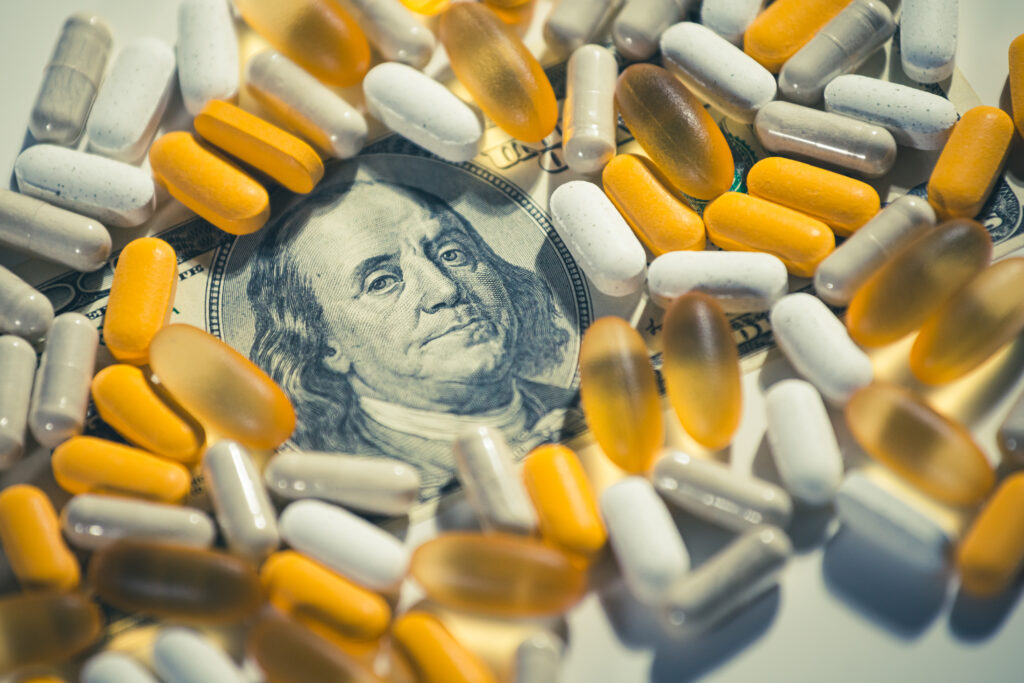The high cost of medications are one of the factors that are driving up the cost of healthcare. In the USA the number one reason for bankruptcy is getting sick. Social medical delivery systems are also struggling. According to the Italian trade Journal, Farmeconomia, the French agency that is charged with the pricing of medicines, Comité Economique des Produits de Santé, (CEPS), struggles to meet its charge based on production and retail cost. Japan’s prices are decided by the government and subsidized by the country’s public health insurance system. The intensity of drug retail places strains on the subsidization policy. Countries across the African continent are under extreme circumstances in providing needed.
According to a BBC report, Zambia, Senegal and Tunisia, everyday drugs cost up to 30 times more than in Europe and North America.
The Pharmaceutical sector defends the retail fees of the varied medicines due the intense R&D expenses and the cost of drug trials. The economics of lost funds on R&D on a drug profile that can’t support a solid profit profile will not be developed.
No matter the validity or lack thereof to the defense, this model is not viable or sustainable.
The Pharmaceutical model will be driven by patent- secured profits. The best means to alleviate global societies from this ineffective model is the growth of Pharmaceutical Tech that obviates the inefficiencies.
IMERI,Institute of Medical Education and Research in Indonesia. The Jakarta based Pharmaceutical Techprenuers are an example of the global Research & Development into Biosimilars.
Biosimilars are biological products that are highly similar to an existing approved reference biological product in terms of quality, safety, and efficacy. They are often developed to provide more affordable options for patients and healthcare systems.
Biosimilars are not generic versions of the reference product, as they are not identical to the reference product in the same way that generic drugs are to their branded counterparts. Rather, biosimilars are highly similar in terms of structure, function, and clinical performance.
The development and approval process for biosimilars is complex and highly regulated, with stringent requirements for analytical, nonclinical, and clinical studies to demonstrate similarity to the reference product. The regulatory approval process for biosimilars is also different from that for generic drugs, with biosimilars typically requiring a separate regulatory pathway.
Biosimilars have the potential to provide significant benefits to patients and healthcare systems by increasing access to effective treatments and reducing costs. However, there are also concerns about the safety and efficacy of biosimilars, as well as their impact on innovation and competition in the biopharmaceutical industry.
R&D into biosimilars is a complex and challenging process, involving a range of scientific and regulatory considerations. The primary goal of biosimilar R&D is to demonstrate that the proposed product is highly similar to the reference biological product in terms of quality, safety, and efficacy.
The first step in biosimilar R&D is to conduct a comprehensive comparative analysis of the proposed biosimilar and the reference biological product. This analysis typically involves a range of analytical, nonclinical, and clinical studies, including:
Characterization studies to compare the physicochemical and biological properties of the proposed biosimilar and the reference biological product.
Nonclinical studies to evaluate the pharmacokinetics, pharmacodynamics, and toxicity of the proposed biosimilar in animal models.
Clinical studies to evaluate the safety, efficacy, and immunogenicity of the proposed biosimilar in humans.
These studies are designed to demonstrate that the proposed biosimilar is highly similar to the reference biological product in terms of structure, function, and clinical performance.
Regulatory authorities around the world have established guidelines and requirements for biosimilar R&D, which must be followed by developers seeking approval of a biosimilar product. These guidelines typically specify the types of studies that must be conducted, as well as the criteria for demonstrating similarity to the reference product.
Despite the challenges involved in biosimilar R&D, there is significant interest in developing these products, as they have the potential to provide more affordable options for patients and healthcare systems, while also increasing competition and spurring innovation in the biopharmaceutical industry.
Biosimilars can provide low-cost medications and potentially increase access to medications for patients. Biosimilars are highly similar versions of existing biologic drugs that have already been approved by regulatory agencies such as the FDA or EMA.
Because the development of biosimilars does not require the same level of investment in research and development as innovator biologics, they can be produced and marketed at a lower cost. This can result in cost savings for patients, healthcare systems, and insurers.
It is important to note, however, that while biosimilars have been shown to be safe and effective alternatives to their reference biologic drugs, they are not identical and their use may require additional monitoring and patient education. As with any medication, patients should always consult with their healthcare providers before starting a biosimilar treatment. The difference between the two offerings will be noted in a delivery system.
Biologics are complex, large-molecule drugs that are produced using living cells and are used to treat a wide range of diseases such as cancer, autoimmune diseases, and infectious diseases. They are typically more expensive than small-molecule drugs, and their development involves a complex process that can take many years and require significant investment.
Biosimilars, on the other hand, are highly similar versions of already approved biologic drugs, also known as reference products. They are not identical to the reference product due to the inherent complexity of biologics but have been demonstrated to have no clinically meaningful differences in terms of safety, purity, and potency. Biosimilars are approved based on a thorough analytical and clinical comparison with the reference product, and they can provide a lower-cost alternative to the reference product once their patents and exclusivity have expired.
The development of biosimilars requires a comprehensive regulatory pathway that involves demonstrating similarity to the reference product through a stepwise approach that includes quality, non-clinical and clinical studies. The regulatory requirements for biosimilars are usually more demanding than those for small-molecule generics, due to the complex nature of biologics.
Overall, the key difference between biologics and biosimilars is that biologics are innovative drugs that were developed and tested de novo, while biosimilars are developed based on an already approved biologic drug and are intended to have similar clinical efficacy and safety profiles.
Biosimilars can provide low-cost medications and potentially increase access to medications for patients. Biosimilars are highly similar versions of existing biologic drugs that have already been approved by regulatory agencies such as the FDA or EMA.
Because the development of biosimilars does not require the same level of investment in research and development as innovator biologics, they can be produced and marketed at a lower cost. This can result in cost savings for patients, healthcare systems, and insurers.
In addition, the availability of biosimilars can also increase competition, which can lead to lower prices for both innovator biologics and biosimilars. This can help to improve patient access to medications and increase affordability.
It is important to note, however, that while biosimilars have been shown to be safe and effective alternatives to their reference biologic drugs, they are not identical and their use may require additional monitoring and patient education.
It is not uncommon for biologic patent holders to object to biosimilar development, as biosimilars represent competition to their products. Biologic patent holders have a vested interest in protecting their intellectual property and maximizing their profits, and biosimilars may impact their revenue stream.
In some cases, biologic patent holders may attempt to block or delay the approval of biosimilars through legal challenges, by asserting patent infringement claims or by lobbying regulatory agencies to impose more stringent requirements for biosimilar approval.
However, it is important to note that biosimilars are approved only after meeting rigorous regulatory standards, including demonstrating that they are highly similar to the reference biologic drug and have comparable safety and efficacy profiles. Biosimilars have the potential to increase competition and lower drug costs, which can ultimately benefit patients and healthcare systems.
Despite the potential for opposition from biologic patent holders, the market for biosimilars has been growing rapidly in recent years, with more and more biosimilars gaining approval and entering the market. This suggests that the benefits of biosimilars are being recognized by healthcare providers and patients, and that the regulatory pathway for biosimilars is becoming increasingly well-established.


